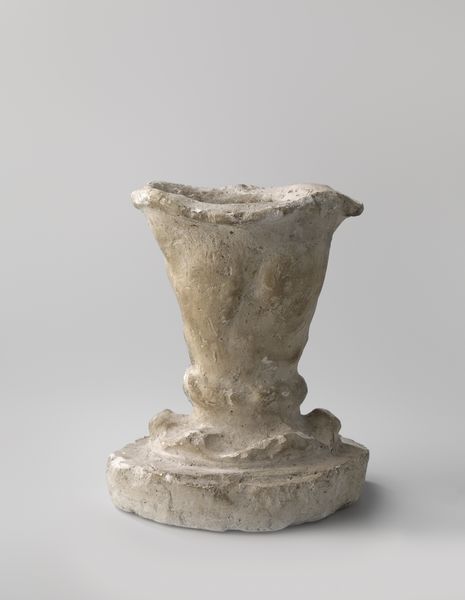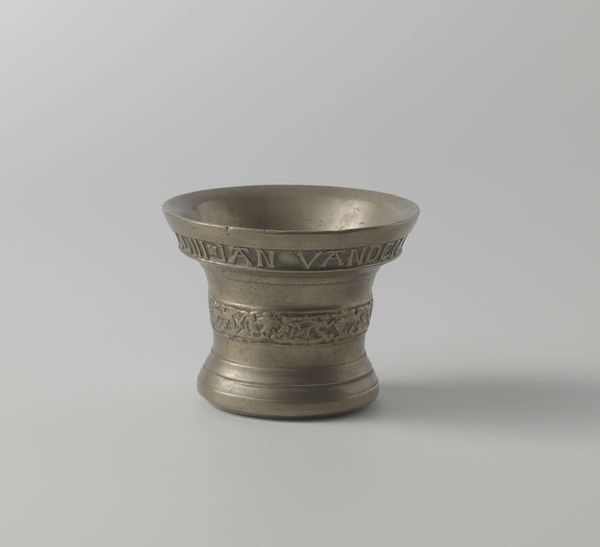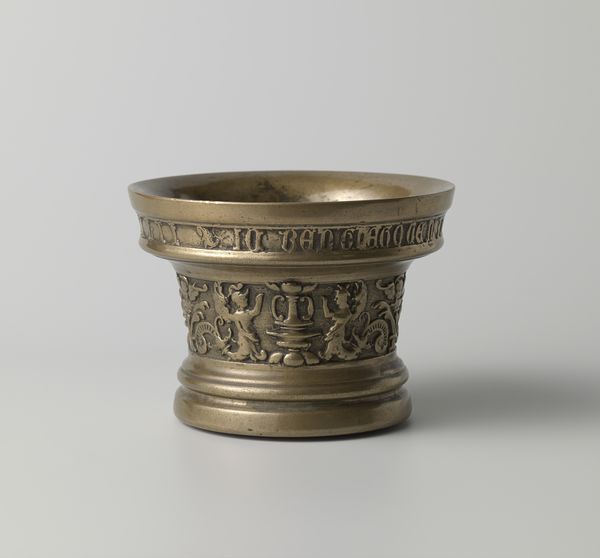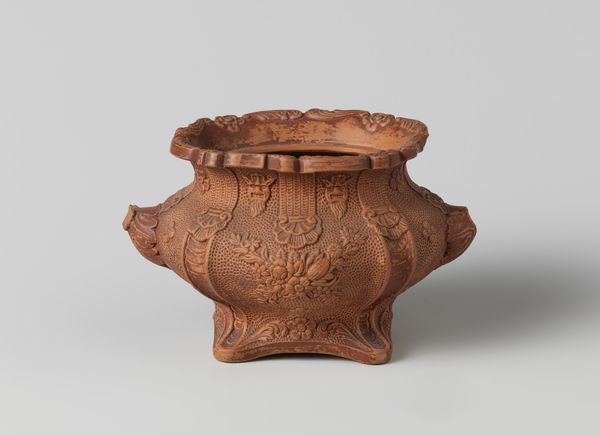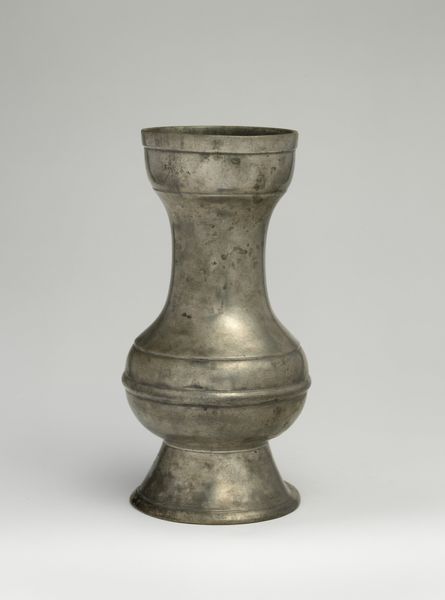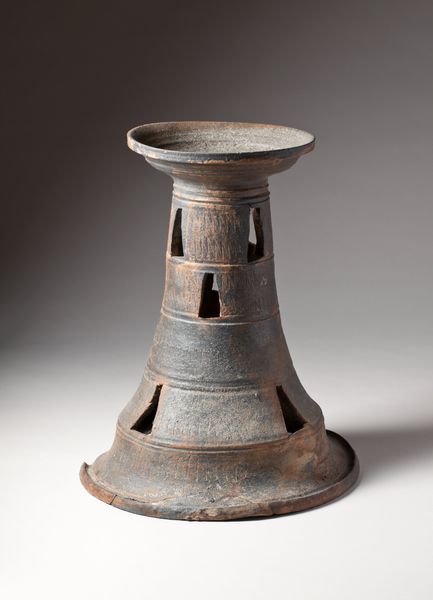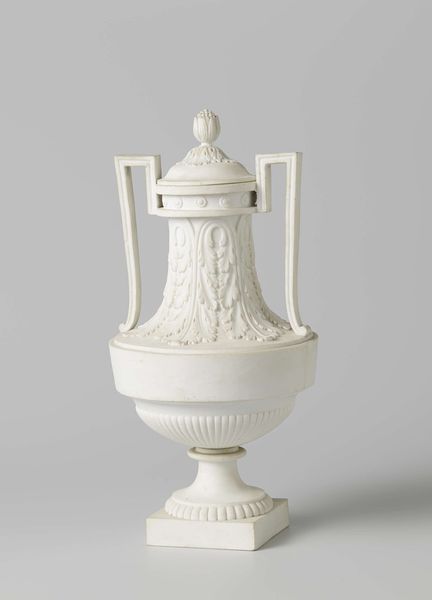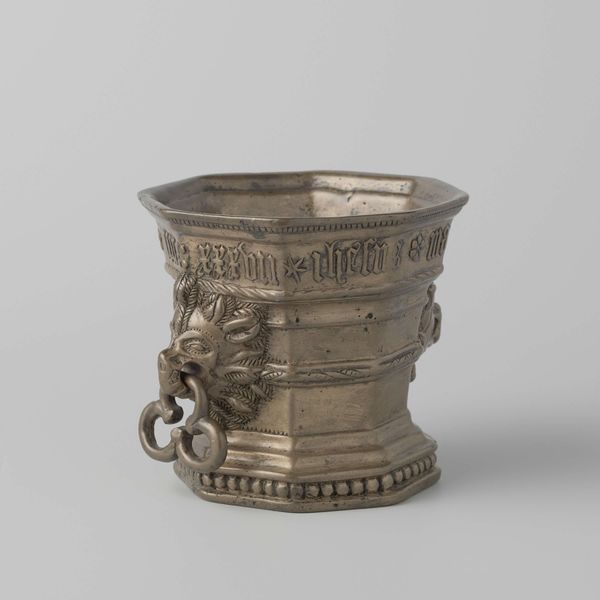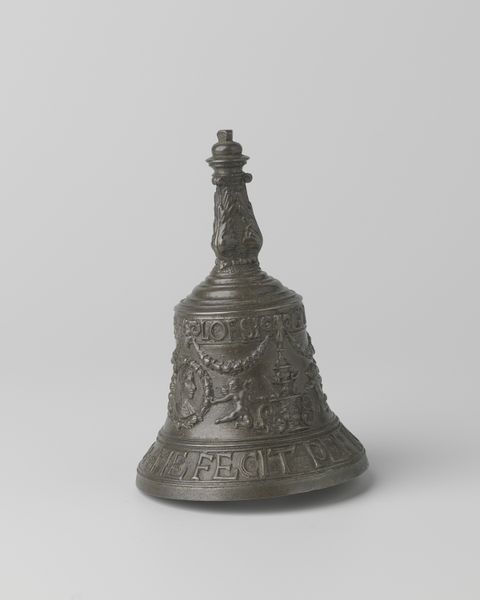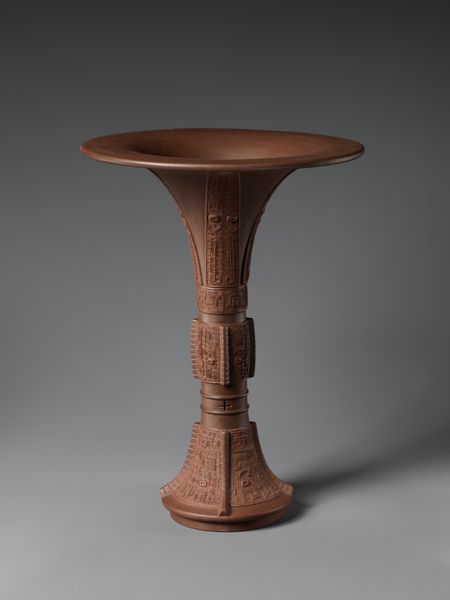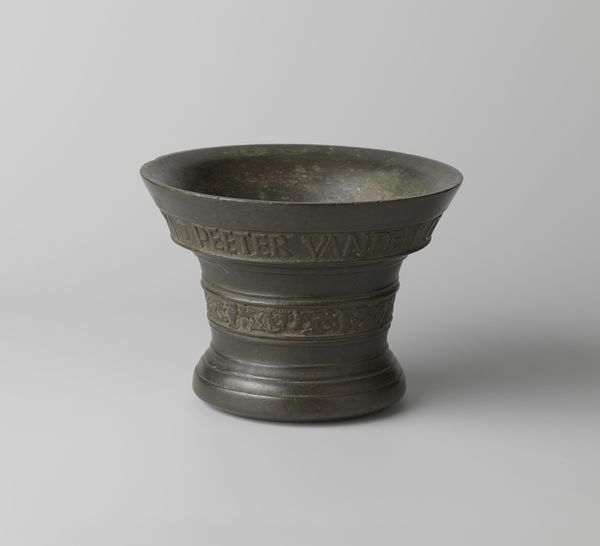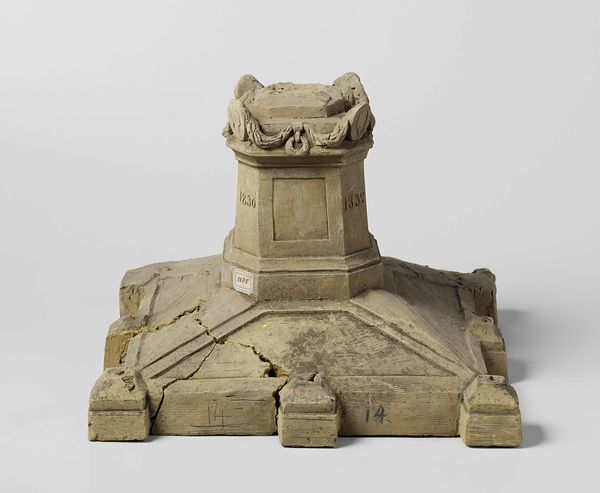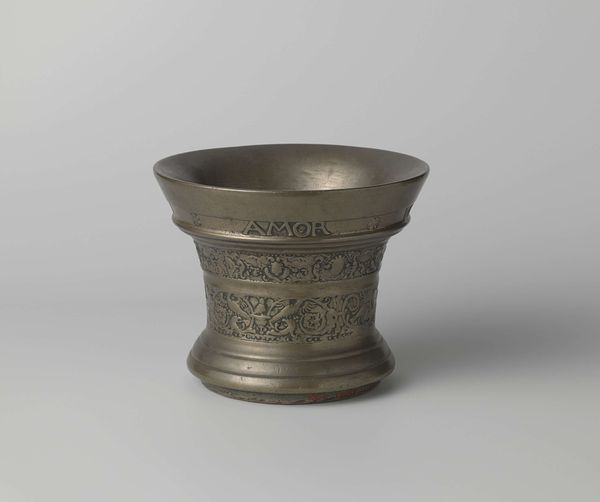
Zeskantige sokkel van klei, behorend bij Ontwerp voor een bloemenstandaard c. 1860 - 1870
0:00
0:00
ceramic, sculpture
#
ceramic
#
classical-realism
#
sculpture
#
decorative-art
Dimensions: height 8.2 cm, diameter 13.2 cm, diameter 10.6 cm, weight 1.149 kg
Copyright: Rijks Museum: Open Domain
Here we see a clay hexagonal base, designed for a flower stand, by Eugène Lacomblé. Lacomblé, living in 19th-century Belgium, existed in a society undergoing industrial transformation and shifting class structures. This piece, though seemingly simple, speaks to the era’s fascination with nature and domesticity, particularly among the rising middle class. Notice how the geometric design of the base contrasts with the natural, organic form it’s intended to support. This interplay highlights the tension between industrial precision and the unpredictable beauty of the natural world, a tension that defines much of 19th-century life. The flower stand, once completed, would have been a status symbol, a celebration of both nature and the ability to cultivate it within the domestic sphere. While the base appears unadorned, its textured surface invites touch, suggesting an intimacy with the object and its intended purpose. It is a reminder that even the most functional objects can carry layers of meaning and cultural significance.
Comments
No comments
Be the first to comment and join the conversation on the ultimate creative platform.

